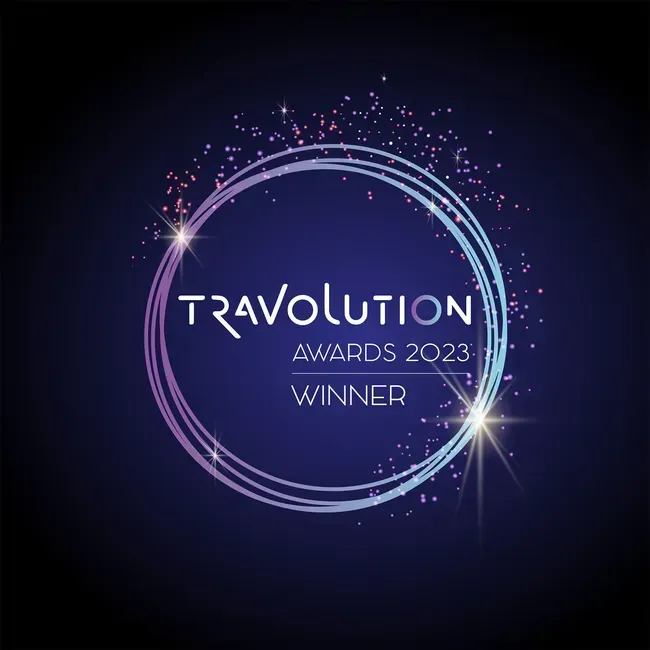Seven No-Code Myths We're Busting For You And Your Travel Business
March 24, 2023
Here's the thing with the internet...
The thing with the internet — as helpful as it is — is that things get taken out of context quicker than you can say the words “world wide web”. It’s the same for no-code development, unsurprisingly. There are developers out there who believe that by using no-code tools, you’re not authentic. Heck, some even say it’s unsafe while others think it’s not scalable!We can safely say, none of those are true.
And for that reason, we’re here to bust the myths surrounding no-code development.

Myth 1: Customising no-code software is a no-go
No-code platforms use pre-made components and a drag-and-drop interface.
So it’s easy to see why some would expect a finished product to be a mere compilation of elements you cannot customise. But this is wrong on so many levels! Whether building from scratch or modifying a pre-built app, no-code platforms offer an array of tools to create a bespoke application — from simple tracking and reporting capabilities to automated workflows complete with notification triggers.
If your project requires more, however, you do have the option to add 3rd party integrations. If you settle on a no-code platform with an app store, such as Wix, Duda or Shopify, you can add things like local SEO or online booking software to expand your offering.
Note: 3rd party integrations require coding so you will need a developer. This will add several (if not) more days to your project’s timeline. Which leads us nicely onto…
Myth 2: There’s no flexibility in building no-code platforms
The very reason no-code platforms are here is to provide flexible software creation for non-technical makers. Because of it, gone are the days where you need to spend thousands on software development to achieve your goals. Take building an e-commerce store on a no-code platform, for example. You choose a template, add your products and start selling — simple! What’s more, the option to add 3rd party integrations twists the flexibility dial further.
Did somebody say no-code tools aren’t flexible…
Myth 3: No-code platforms are for small and simple applications
Some believe no-code platforms are incapable of building “real” software. At first glance, they can appear basic, simple and minimalistic. Get under the skin, though, and they’re everything but.No digital tool is flawless. (Trust us, we’ve tested thousands.) They each have limitations that prevent them from being perfect, and those in the no-code category are no different. But despite this, no-code apps (can) have an extensive range of features and functionality that will serve startups and global organisations alike.
In fact, according to a Forrester Study, most businesses nowadays use no-code platforms to build complex applications. What’s more, these apps appeal to entire teams and multiple departments.
Myth 4: No-code doesn’t allow for collaboration
Traditional software development forces engineers and developers to work in silos. Head down, headphones on — writing line after line of code. Yes, they’ll get together for daily updates, and yes, it’s proven effective, but it’s not the most collaborative. No-code development, on the other hand, is exciting for everyone involved. From the ideas people to those who fancy their hand at designing — no-code invites wider teams and heck, in some instances, entire businesses to jump on board.
All in all, no-code platforms make it possible for everyone to contribute to an innovative and agile project.
Myth 5: There’s no programming needed
Whereas developers code variables to build applications, no-code platforms rely on pre-built elements. This enables anyone with a PC to design, build and test fully-fledged apps without writing code.
This doesn’t mean no-code platforms are anti-code, though. Some more complex tasks, such as adding 3rd party integrations, still require a developer to input code. While this might defeat the point of a no-code platform, it gives you the best of both worlds, and means you can hire a developer towards the end of the build to add the finishing touches. What’s more, a developer will also identify bugs, test, and help scale your application.
Myth 6: No-code doesn’t have the correct security
The assumption of no-code not being secure comes from its simplicity and ease of use. But just because some applications don’t have everything plus the kitchen sink thrown in, it doesn’t mean they aren’t secure.
Take Bubble.io, for example, which keeps its collaborators and users safe with free SSL certificates, multi-factor authentication and secure infrastructure.
Myth 7: No-code apps don’t look like “real” apps
Another myth is that applications built on no-code platforms won’t look as professional (or beautiful) as those build from scratch using UI and UX designers. This stems from no-code platforms being made up of predominantly pre-built components, despite developers being able to add HTML and CSS.
Even without adding custom code, no-code apps can be built with customised UI/UX designs and a dynamic interface — just like those built with code.
No-code is no longer a myth!
No-code application technology is here to stay. And thanks to better software, it’s becoming easier to streamline the development process and build apps that solve business requirements, and meet needs and wants.
To the untrained eye, no-code platforms might look static and incapable of building complex apps. However, their automation and use of pre-built elements provide a more efficient, empowering and cost-effective solution to doing everything from scratch.
No-code platforms use pre-made components and a drag-and-drop interface.
So it’s easy to see why some would expect a finished product to be a mere compilation of elements you cannot customise. But this is wrong on so many levels! Whether building from scratch or modifying a pre-built app, no-code platforms offer an array of tools to create a bespoke application — from simple tracking and reporting capabilities to automated workflows complete with notification triggers.
If your project requires more, however, you do have the option to add 3rd party integrations. If you settle on a no-code platform with an app store, such as Wix, Duda or Shopify, you can add things like local SEO or online booking software to expand your offering.
Note: 3rd party integrations require coding so you will need a developer. This will add several (if not) more days to your project’s timeline. Which leads us nicely onto…
Myth 2: There’s no flexibility in building no-code platforms
The very reason no-code platforms are here is to provide flexible software creation for non-technical makers. Because of it, gone are the days where you need to spend thousands on software development to achieve your goals. Take building an e-commerce store on a no-code platform, for example. You choose a template, add your products and start selling — simple! What’s more, the option to add 3rd party integrations twists the flexibility dial further.
Did somebody say no-code tools aren’t flexible…
Myth 3: No-code platforms are for small and simple applications
Some believe no-code platforms are incapable of building “real” software. At first glance, they can appear basic, simple and minimalistic. Get under the skin, though, and they’re everything but.No digital tool is flawless. (Trust us, we’ve tested thousands.) They each have limitations that prevent them from being perfect, and those in the no-code category are no different. But despite this, no-code apps (can) have an extensive range of features and functionality that will serve startups and global organisations alike.
In fact, according to a Forrester Study, most businesses nowadays use no-code platforms to build complex applications. What’s more, these apps appeal to entire teams and multiple departments.
Myth 4: No-code doesn’t allow for collaboration
Traditional software development forces engineers and developers to work in silos. Head down, headphones on — writing line after line of code. Yes, they’ll get together for daily updates, and yes, it’s proven effective, but it’s not the most collaborative. No-code development, on the other hand, is exciting for everyone involved. From the ideas people to those who fancy their hand at designing — no-code invites wider teams and heck, in some instances, entire businesses to jump on board.
All in all, no-code platforms make it possible for everyone to contribute to an innovative and agile project.
Myth 5: There’s no programming needed
Whereas developers code variables to build applications, no-code platforms rely on pre-built elements. This enables anyone with a PC to design, build and test fully-fledged apps without writing code.
This doesn’t mean no-code platforms are anti-code, though. Some more complex tasks, such as adding 3rd party integrations, still require a developer to input code. While this might defeat the point of a no-code platform, it gives you the best of both worlds, and means you can hire a developer towards the end of the build to add the finishing touches. What’s more, a developer will also identify bugs, test, and help scale your application.
Myth 6: No-code doesn’t have the correct security
The assumption of no-code not being secure comes from its simplicity and ease of use. But just because some applications don’t have everything plus the kitchen sink thrown in, it doesn’t mean they aren’t secure.
Take Bubble.io, for example, which keeps its collaborators and users safe with free SSL certificates, multi-factor authentication and secure infrastructure.
Myth 7: No-code apps don’t look like “real” apps
Another myth is that applications built on no-code platforms won’t look as professional (or beautiful) as those build from scratch using UI and UX designers. This stems from no-code platforms being made up of predominantly pre-built components, despite developers being able to add HTML and CSS.
Even without adding custom code, no-code apps can be built with customised UI/UX designs and a dynamic interface — just like those built with code.
No-code is no longer a myth!
No-code application technology is here to stay. And thanks to better software, it’s becoming easier to streamline the development process and build apps that solve business requirements, and meet needs and wants.
To the untrained eye, no-code platforms might look static and incapable of building complex apps. However, their automation and use of pre-built elements provide a more efficient, empowering and cost-effective solution to doing everything from scratch.

February 21, 2025
There's a wealth of information at your fingertips that can enhance your travel experiences through data-driven marketing strategies. In the modern age, your preferences and behaviours serve as valuable insights for travel brands aiming to cater to your specific desires. By understanding how data shapes travel marketing, you can better navigate choices that resonate with your interests, ultimately leading to more enriching journeys. In this post, we'll explore how data influences the travel industry and how you can harness this knowledge for your next adventure.

February 20, 2025
Marketing your destination effectively can lead to unforgettable travel experiences for your visitors. By understanding your audience and tailoring your offerings, you can create unique journeys that resonate with their desires. This post will provide you with actionable tips to enhance your marketing strategies, ensuring that your destination stands out in a competitive landscape. Elevate your approach and draw travellers in by focusing on personal connections and enriched storytelling.

February 14, 2025
There’s no denying that digital innovations are transforming the way you travel, making your experiences more immersive and personalised than ever before. From virtual reality previews of destinations to AI-driven travel planning tools, technology is fostering your wanderlust and enhancing the journey itself. As you navigate the future of travel, discover how these advancements not only streamline logistics but also enrich your connections to the places and cultures you explore.

February 13, 2025
Choices abound in the ever-evolving landscape of holiday planning, and as 2025 approaches, families like yours will encounter a myriad of options. From traditional festivities to unique experiences, the way you select your holidays will be shaped by emerging trends, economic considerations, and new technologies. Understanding these developments will empower you to make informed decisions that enhance your family's enjoyment and connection during the festive season. Join us as we explore the exciting array of holiday choices that await you in 2025.

February 3, 2025
Over time, you can leverage LinkedIn groups as powerful platforms to enhance your online travel business. Engaging in these communities allows you to connect with potential customers, share valuable insights, and build your brand's credibility. By strategically participating in discussions and sharing your expertise, you can drive traffic and interest towards your offerings. This post will explore the 10 effective ways you can harness the potential of LinkedIn groups to truly elevate your travel venture.

January 30, 2025
Static travel websites can often become a missed opportunity for engagement and revenue. You can transform your site into an interactive platform by incorporating real-time availability and booking capabilities. By using tools like Travelgenix's widgets / apps, you empower visitors to easily research and book accommodations, flights, and experiences relevant to their travel plans. This not only enhances user experience but also maximises your monetisation potential, turning your website into a dynamic revenue-generating hub.

January 28, 2025
Marketing your travel website effectively requires a solid SEO strategy that can enhance your visibility and attract potential travellers. You must focus on keyword optimisation , ensuring you target the right terms that your audience is searching for. Additionally, incorporating high-quality content that resonates with your readers can establish your authority and encourage engagement. Don't underestimate the importance of mobile optimisation as many users search for travel options on their phones. By understanding these strategies, you can boost your site’s ranking and drive more traffic, ultimately leading to increased bookings and customer loyalty.

January 27, 2025
Understanding Email Marketing A effective email marketing strategy allows you to reach your audience directly in their inbox, providing targeted content that aligns with your travel offerings. It's a form of digital communication that involves sending tailored messages to a subscriber list, with the goal of promoting your travel website and engaging potential customers.

January 26, 2025
It's important for you to understand that local SEO can significantly enhance your travel website's visibility in a highly competitive market. By implementing effective localisation strategies, you can attract more visitors who are actively searching for travel options in your area. This provides a unique opportunity to improve your online presence and connect with potential customers who are less than a few clicks away. Prioritising local SEO not only boosts your rankings on search engines but also fosters trust and relevance among travellers looking for their next adventure.



